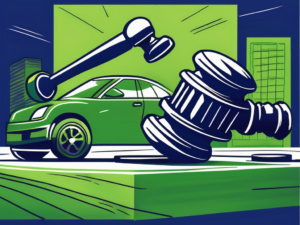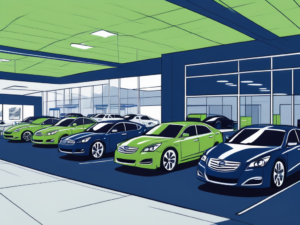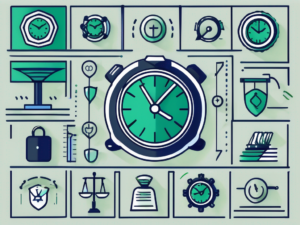Talk to Sales: (401) 200-6026

In the competitive world of car sales, it’s not enough to simply make a great impression on potential buyers during their visit to the dealership. To truly secure a sale and build lasting customer relationships, it’s crucial to follow up with car buyers via email. However, not all follow-up emails are created equal. In order to stand out from the crowd and ensure that your emails are not ignored, it’s important to craft them with care and precision. In this article, we’ll explore the various elements of a successful follow-up email and provide you with invaluable tips to help you write emails that car buyers won’t be able to resist.
Understanding the Importance of Follow-up Emails in Car Sales
Before we delve into the techniques of writing effective follow-up emails, let’s first understand why they play such a crucial role in the car sales process.
Follow-up emails serve as a vital tool in maintaining a strong connection with potential car buyers even after they have left the dealership. These emails not only keep your dealership fresh in the minds of customers but also provide an opportunity to address any lingering concerns or questions they may have. By nurturing these relationships through consistent communication, you can showcase your dedication to customer satisfaction and increase the chances of converting leads into sales.
The Role of Follow-up Emails in Customer Retention
Follow-up emails are not only important for closing a sale, but they also contribute significantly to customer retention. By nurturing the customer relationship through consistent communication, you demonstrate that you genuinely care about their needs and preferences. This builds trust and increases the likelihood of repeat business, referrals, and positive online reviews.
Moreover, follow-up emails can also be used to provide valuable post-purchase support and information to customers. By offering guidance on vehicle maintenance, sharing driving tips, or notifying them about upcoming service specials, you can further solidify your relationship with customers and position your dealership as a trusted resource for all their automotive needs.
Sell cars on the lot faster with AutoRaptor
Know if we’re the right fit within 10 minutes
Why Car Buyers Ignore Follow-up Emails
While follow-up emails have the potential to be incredibly effective, they are often ignored by car buyers. The reasons behind this can vary, but common factors include:
- Lack of personalization: Generic emails that feel impersonal fail to capture the attention of car buyers who receive countless emails every day.
- Misalignment with buyer’s needs: If an email fails to address the buyer’s specific needs or concerns, it is likely to be disregarded.
- Poor timing: Sending follow-up emails at the wrong time can result in them being overlooked or deleted without being read.
Crafting the Perfect Follow-up Email
Now that we understand the importance of follow-up emails and the reasons behind their frequent dismissal, it’s time to explore the steps to crafting an email that car buyers will engage with.
Follow-up emails are a crucial part of the car buying process, serving as a way to maintain communication with potential customers and guide them towards a purchase decision. By mastering the art of follow-up emails, car dealerships can build trust, address concerns, and ultimately increase their chances of closing a sale.
The Art of Subject Line Writing
The subject line is the first thing car buyers see when they receive your follow-up email. It should be concise, attention-grabbing, and personalized whenever possible. A strong subject line can entice the recipient to open the email and continue reading.
When crafting a subject line, consider using intriguing language that sparks curiosity or offers a benefit to the recipient. Avoid generic phrases and instead opt for specific details that pique the recipient’s interest. By customizing the subject line to resonate with the individual car buyer, you increase the likelihood of your email being opened and read.
Personalizing Your Email Content
Personalization is key to creating a connection with the car buyer. Address them by their name, reference their recent visit or inquiry, and tailor the content of your email to specifically address their needs and concerns. This personal touch shows that you are genuinely interested in their satisfaction and increases the chances of a response.
Furthermore, consider including relevant information or offers based on the buyer’s previous interactions with your dealership. By demonstrating that you have taken the time to understand their preferences and requirements, you can establish a sense of trust and credibility that sets your follow-up email apart from generic communications.
Timing Your Follow-up Emails Right
The timing of your follow-up emails can greatly impact their effectiveness. Sending an email too soon after the initial contact can come across as pushy, while sending it too late may result in the buyer losing interest. Find the sweet spot by considering the individual buyer’s needs and preferences, and aim to strike the right balance between being attentive and respectful of their time.
Consider utilizing automation tools to schedule follow-up emails at optimal times based on the buyer’s behavior and engagement with previous communications. By leveraging data and analytics, you can ensure that your follow-up emails are delivered when the recipient is most likely to be receptive, increasing the chances of a positive response and engagement.
Sell cars on the lot faster with AutoRaptor
Know if we’re the right fit within 10 minutes
Essential Elements of an Effective Follow-up Email
Beyond the techniques discussed above, there are several essential elements that should be present in every follow-up email you send:
The Power of a Strong Opening Line
When crafting your opening line, aim to capture the reader’s attention immediately. State the purpose of your email concisely and enthusiastically. Make it clear that you are reaching out because you genuinely believe that your product or service can meet their needs.
The Importance of a Clear Call-to-Action
Every follow-up email should have a clear call-to-action that guides the recipient towards the next steps. Whether it’s scheduling a test drive, providing additional information, or requesting a conversation, your call-to-action should be compelling, easy to understand, and accompanied by clear instructions.
The Impact of a Personalized Closing
Just as the opening line is important, so too is the closing of your follow-up email. Personalize your closing by using the recipient’s name, expressing gratitude for their time and consideration, and including your contact information for further assistance. By humanizing the conversation, you leave a lasting impression that can set you apart from the competition.
Avoiding Common Follow-up Email Mistakes
Even with a well-crafted email, there are still some common mistakes that can hinder its effectiveness. Let’s explore a few of these potential pitfalls:
Overcoming the Fear of Being Too Pushy
Many salespeople fear coming across as pushy when following up with potential customers. While it’s important to be persistent, finding the right balance is key. Avoid being overly aggressive and respect the buyer’s boundaries. Use language that conveys enthusiasm without being overbearing, and always offer the option to opt-out or unsubscribe.
The Dangers of Sending Generic Emails
Avoid the temptation to send mass-produced, generic follow-up emails. Car buyers can quickly identify these emails and are far more likely to disregard them. Take the time to personalize each email and tailor the content to individual needs and preferences. This extra effort will increase the likelihood of engagement and conversion.
The Pitfalls of Poor Timing
Sending follow-up emails at inappropriate times can significantly reduce their effectiveness. Avoid sending emails during the buyer’s working hours or too early in the morning or late at night. Finding the right balance requires understanding your target audience and their preferences. Consider factors such as time zones and typical schedules to ensure your emails are received and read at the ideal time.
By following these guidelines and investing time and effort into crafting highly effective follow-up emails, you can greatly increase your chances of success in the competitive car sales industry. Remember, a personalized and well-timed email that genuinely addresses the needs of the buyer can make all the difference. Implement these strategies and watch as your follow-up emails capture the attention of car buyers and help drive your sales forward.
Take Your Follow-up Emails to the Next Level with AutoRaptor
Maximizing the impact of your follow-up emails is just the beginning. With AutoRaptor’s Dealership CRM, you can streamline your communication and enhance your sales strategy even further. Ready to see how? Book a quick demo to explore our CRM’s features and discover how AutoRaptor can help increase your sales. In just 10 minutes, you’ll know if we’re the right fit for your dealership. Don’t miss out on the opportunity to save an average of $10.8k per year and keep your sales team at the top of their game. Schedule your demo today and take the first step towards transforming your dealership’s success.
Subscribe to our Newsletter
Resources to help your dealership convert more leads into sales, retain more customers, and market inventory smarter, straight to your inbox every Sunday.




